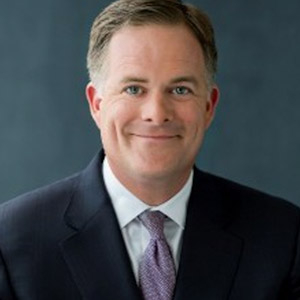NAFE Names Top Companies for Executive Women
by Tina Vasquez (Los Angeles)
The National Association for Female Executives has once again released their list of the top corporations for executive women-or as the site puts it, their “annual scrutiny of America’s corporations.” The 2009 list, which takes into account succession plans, metrics for managers, and commitment to bringing women into P&L posts, was expanded to include 50 companies instead of its usual ten. According to the organization, the pool of applicants increased so drastically over the past year that the expansion was necessary.
NAFE’s top ten list features some familiar faces, as well as a number of newcomers who made their presence and dedication to hiring and retaining female talent known this year. Here are the top ten companies for women, according to NAFE:
10. Procter & Gamble
Women account for 50 percent of global management new hires at this manufacturing giant, which has also seen a 20 percent increase in the number of women at presidential, VP, and general manager levels over the past three years. The company also sees to it that the North America Market Development Organization joins forces with the Regional Women’s Network and National Women’s Board to influence senior leadership, which helps deliver improved retention and development of women. Not only that, but according to Fortune Magazine, the company also boasts three of the 50 most powerful women in business: Susan Arnold, Melanie Healy, and Deb Henretta.
Eighty-nine percent of Principal Financial Group’s employees consider their company committed to the fair treatment of all employees. That alone is an impressive fact, but when coupled with the company’s dedication to pushing talented women in staff positions to line careers, the company becomes a clear stand out for number nine on the list. Last year alone three women took major leaps in the company: Nora Everett moved from legal to a position as SVP of Retirement and Investor Services and President of Principal Funds. Deanna Strable was an actuary who was promoted to the position of SVP of the Individual Life and Specialty Benefit Division. Lastly, Julia Lawler returned as CIO after serving as president of the real estate equity group.
Quite impressively, women account for more than half of Marriott’s associates, nearly half of its managers, and 30 percent of its VP’s. The popular hotel chain has a number of truly inspiring women in its ranks. Take for example the story of Lucy Martin, who began as a lowly cocktail waitress at the New York Marriott Marquis and now holds a position as executive pastry chef at the Orlando World Center Marriott. Let’s also not forget Erica Qualls’ journey. Fifteen years ago she was working nightshift answering phones at a Marriott Hotel in California, now she’s general manager of the Atlanta Marriott Marquis. Surely there are many other similar stories that have come from Marriott International- and many others currently in the works.
It truly would be a shame if one of the country’s largest women’s clothing manufacturers didn’t have a history of supporting women’s talent internally, but thankfully that’s not the case at Liz Claiborne. Women account for 77 percent of the workforce at this company, with 67 percent as senior managers and 40 percent in executive positions with profit- and-loss responsibilities. Aside from these impressive statistics, the company also implemented an educational program geared towards high school students in 1,000 schools around the country. The program’s aim is to help end domestic violence through the use of their “Love is not Abuse” and “Love is Respect” campaigns that have reached 48 states.
This is actually the first time this 120-year-old consumer health care products manufacturer has made its way on to NAFE’s list. The company’s new Women’s Leadership Initiative is mostly responsible, as is the company’s involvement with Smith and Dartmouth’s Tuck School of Business’ executive education program. The program assists Johnson & Johnson women assume responsibility for global businesses or functional areas. Both programs have initiated a career acceleration program for multicultural women.
This multinational computer technology and IT consulting corporation has implemented shadow programs, which according to the site, “bring transparency to executive reviews by highlighting open positions, candidate slates, and closed positions. All of which is intended to allow women access and visibility to key positions. The company’s other program, “Gender Differences,” has also strengthened communication skills between men and women, while also expanding networks.
Several years ago, General Mills’ senior management and chief executive set out to create a strategic plan that would drive change for women within the company. The company’s new CEO has assisted in this vision by demanding accountability through officer-level goals, creating tools to address development changes, and having senior leaders both identify and remove systematic barriers to women within the company. Last year women accounted for 54 percent of participants in General Mills’ leadership training program at the GM Institute and that number is only expected to rise.
Closing in at number three on the list is Avon Products; a company that has historically been devoted to the advancement and financial freedom of women in the workplace. The company, which has remained profitable despite a recession, is also the only one on the list to feature a female chief executive. Women also comprise 40 percent of the company’s board and 56 percent of the powerful company’s senior managers. Like Principal Financial Group, the company also has women on Fortune’s list of the 50 most powerful women in business; both CEO Andrea Jung and President Elizabeth Smith hold that honor.
2. AstraZeneca
This is the first time this pharmaceutical giant has found its way to NAFE’s list. The company’s focus on women in succession plans helped it clinch the number two spot. Management reviews have revealed that 40 percent of women at the company have been identified for long term senior roles. Women also comprise 36 percent of identified global high potentials for VP positions and above. Even more impressive, women account for 23 of the 55 members on U.S. governance teams.
1. Aetna
This national leader of healthcare benefits has a lot to brag about. Aside from being number one of NAFE’s list of the top companies for professional women, the company’s three-year-old Diverse Discoveries leadership initiative has succeeded in assisting women and people of color excel within the company. The seven month program increases visibility, enhances skills, assists in managing personal and professional goals, and creates access to mentoring and networking opportunities. The company also has a policy ensures that each business plan for each department must include metrics for women and people of color in managerial positions, as well as action plans to make these goals a reality.
Ann Henry, Vice President of Global Customer Delivery and Business Process for Hewlett-Packard, a company on NAFE’s top 50 list, believes that women must take their career into their own hands and make themselves known, as opposed to just waiting for a promotion to fall into their lap. “Most women believe that if they do a great job, their career advancement will take care of itself. I believe that everyone needs to have a clear objective and develop a plan to advance it; it shouldn’t be left to chance or the goodwill of others,” Henry said.
That being said, the types of programs developed by the company’s on NAFE’s top ten list can and do assist women in accelerating their career and getting to a place their talent could have taken them, though probably at a much slower pace. NAFE’s annual list does a great service by applauding the company’s who have deemed it important to see their female workforce not only succeed, but succeed at the highest levels possible within the company.





